8 Best Places for White Water Rafting in Colorado
Beginner White Water Rafting - From the Rafting Experts Thinking about trying out whitewater raf ..
Read more
Thinking about trying out whitewater rafting? Beginners to white water rafting are in for an incredible blend of adrenaline and nature, perfect for those looking to shake up their routine with something exciting. In this guide, we picked the brains of our vetted and curated whitewater rafting outfitters and guides across the country to detail everything you need to know as a beginner—from understanding the different classes of rapids to picking out the right safety gear. Join us as we explore what makes whitewater rafting a must-try adventure.
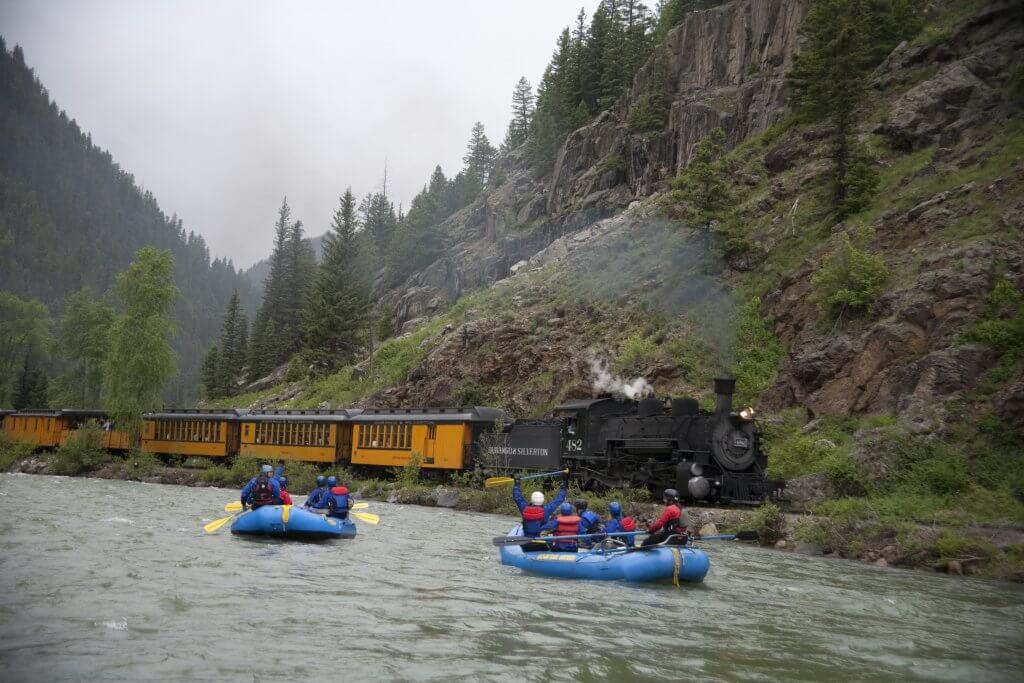

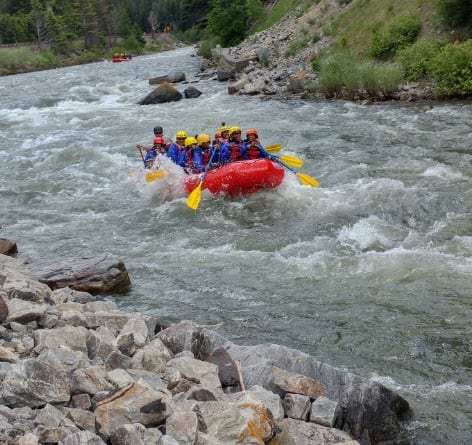
Whitewater rafting is a popular outdoor adventure typically booked as a guided tour with a local river guide. An inflatable raft is used to navigate a river with some level of rapids. It is called white water because the frothy water takes on a white appearance because of the rapids. Rapids are created by the river’s gradient (or how steep it is), obstructions like rocks and boulders, narrow channels that constrict a river’s flow, and the flow rate of a river.
River rafting can be done in most rivers, while white water rafting is typically done in rivers with some measure of turbulence. Checking the class or level of rapids in a river is important to know whether you are heading out on a calm, flat, peaceful float or whether you will be in for some rapids. The right gear, guide, and experience are needed for more turbulent rivers.
The rush of white water and the typically spectacular scenic views along the river make whitewater rafting a popular spring and summer activity. Whitewater rafting can include bouncing and dropping in sections of rapids, and also relaxing in calmer areas of the river between rapids. White water rapids are categorized in a class I-VI system by the American Whitewater Organization, depending on the size and technicality of the rapids.
| Class | Description | Difficulty Level | Skill Level |
| I | Typically calm water, any rapids are very small and gentle, little to no obstruction. | Easy | Easy |
| II | Easy rapids with waves up to three feet that are easily identified with little scouting necessary. Obstacles can easily be avoided, some maneuvering may be required. | Easy | Novice |
| III | Moderate rapids with waves up to four feet, narrow passages can rock boats with the opportunity to get wet. | Moderate | Intermediate |
| IV | Longer and more difficult rapids and narrow passages, some are powerful with cross currents. Requires careful maneuvering. | Difficult | Advanced |
| V | Violent and turbulent rapids, some with multiple obstructions like holes and drops. Large waves and powerful currents. Requires expert maneuvering. | Extremely difficult | Expert |
| VI | Almost impossible to navigate as the rapids or waterfalls are extremely dangerous. These are only attempted by the most expert or extreme rafters and kayakers. | Extraordinarily Difficult/Unrunnable | Highest Expert Level |
The months of June, July and August will bring temperatures that are generally warm and dry with moderate weather, which makes for the best rafting. Late spring and early summer will provide the best rapids, as snowmelt increases the flow of most rivers. By late summer, the flow of many rivers has decreased, and rafting may be a calmer float in most areas.
Selecting the right rafting adventure is essential for a safe and enjoyable experience. Outfitters typically offer a range of trips from easy floats (Class I) to adrenaline-pumping advanced rapids (Class V). Assess your river experience, physical fitness, swimming ability, and comfort with fast-moving water. Outfitters will provide a pre-trip briefing to help you understand what to expect and choose a trip that matches your skill level. They often provide detailed itineraries so you can know ahead of time what the day will entail.
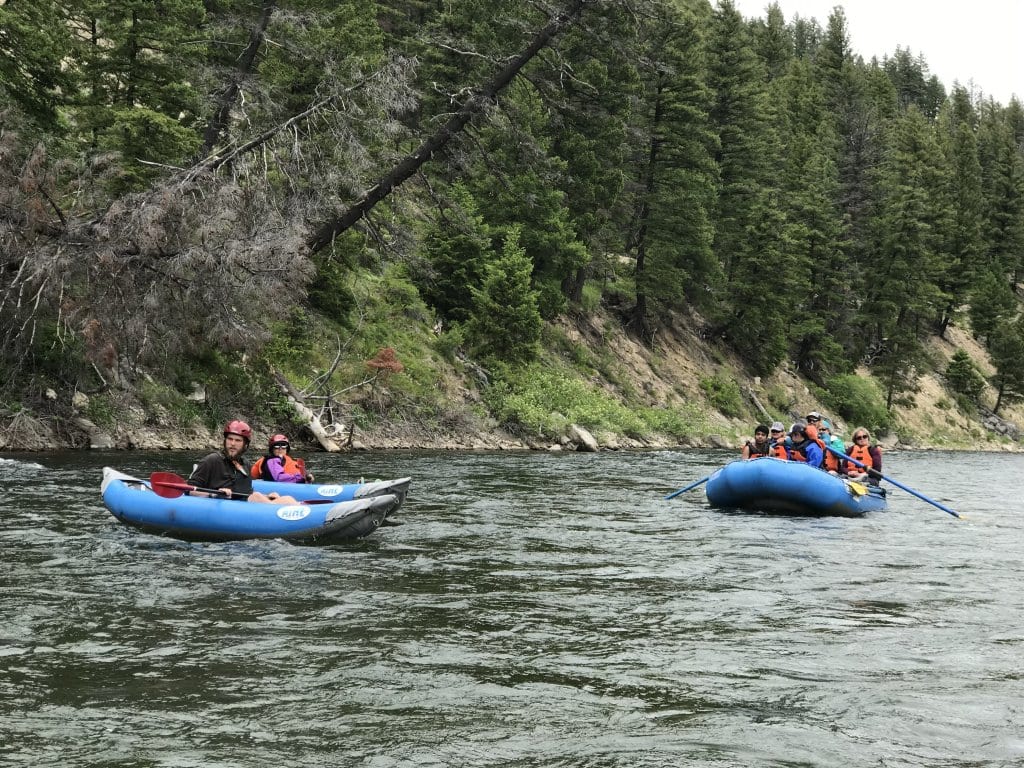
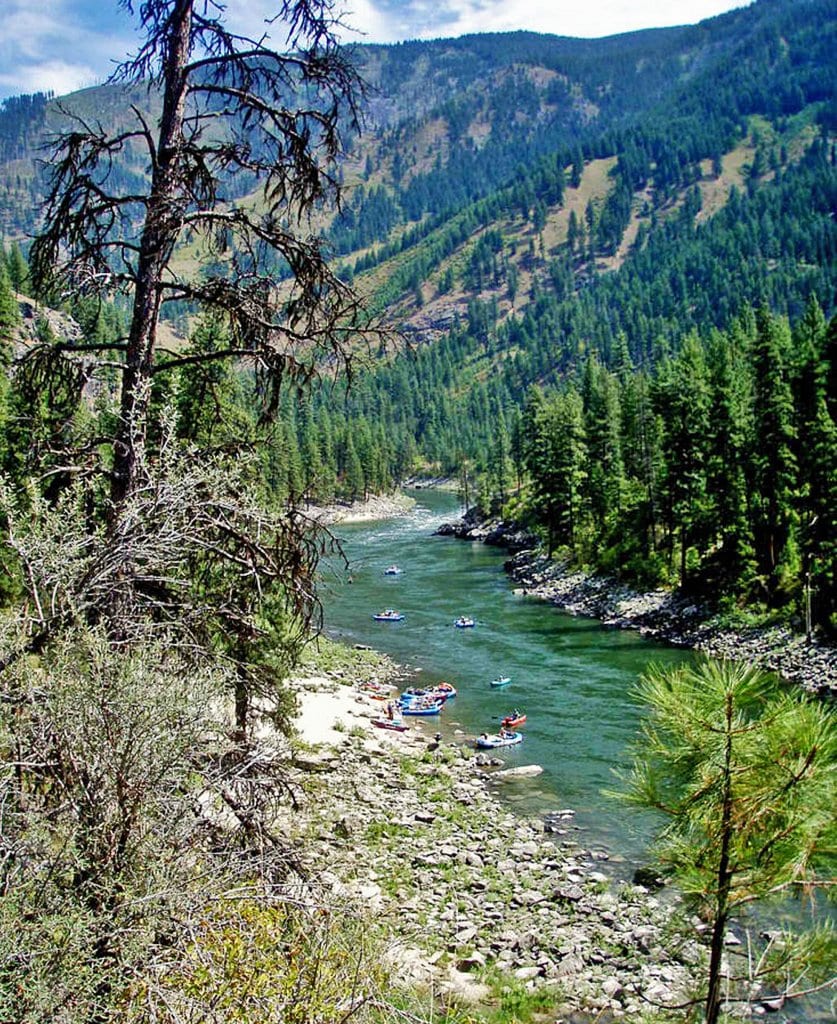
Your first rafting trip will be an unforgettable adventure! Here’s what typically happens:
Many beginners to white water rafting often wonder, is whitewater rafting dangerous? Like any adventure sport, there are inherent risks due to the dynamic nature of river environments. However, with the right preparation, guidance and safety measures, white water rafting can be a safe and exciting adventure.
Overall, while whitewater rafting does have risks, the activity is generally considered safe when conducted under the guidance of professional outfitters who prioritize safety. Listening to your guide is crucial—they know the river and can help you navigate through the gnarly sections safely. Learn the hand signals for “stop,” “paddle forward,” or “get down,” as verbal commands can often be drowned out by the noise of the river. Stay alert, keep your hands on the paddle, and always have a watchful eye on the water and your fellow rafters. Many people enjoy rafting each year without incident, taking home only great memories and stories of adventure.
Sharing the river responsibly ensures everyone has an epic time. Always avoid littering—pack out what you pack in. Be mindful of your noise level to preserve the tranquil nature setting and respect other river users. When encountering other boats, kayakers, or wildlife, maintain a safe distance and navigate crowded areas calmly and courteously. Understanding and practicing good river etiquette not only protects the environment but also enhances safety for everyone on the water.
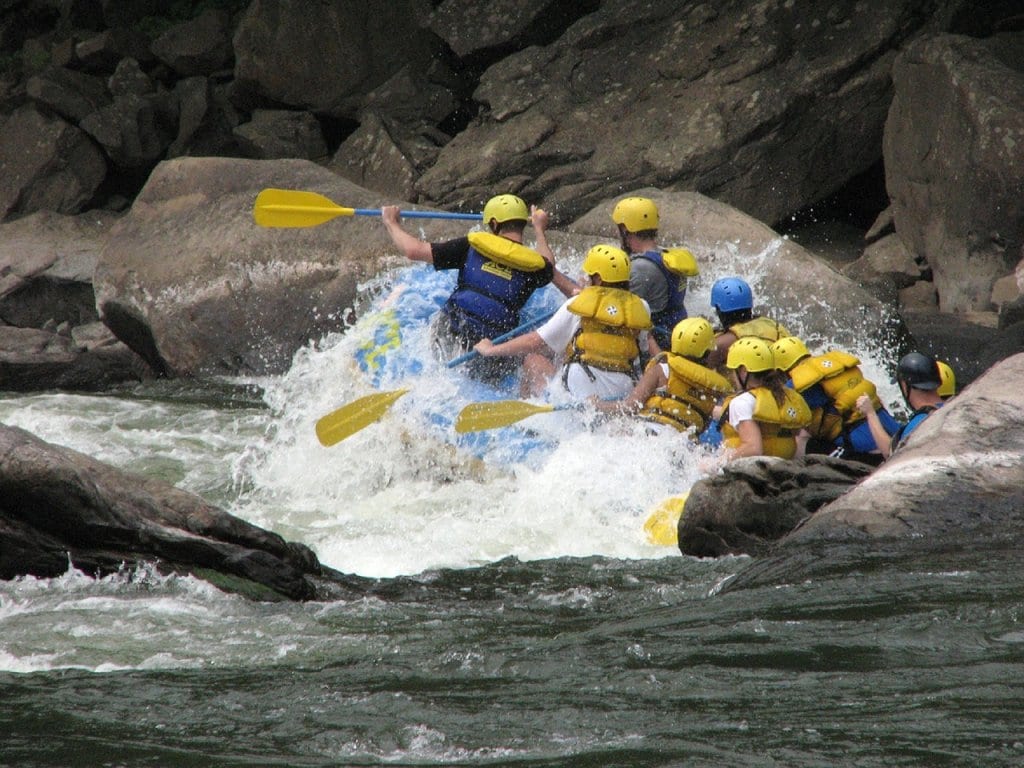


Here are some top-notch beginner white water rafting spots in the US:
| River Name | Location | Class | Description |
| Nantahala River | North Carolina | II-III | Gentle Class II and III rapids, ideal for beginners. |
| Arkansas River | Colorado | II-III | Bighorn Sheep Canyon features beginner-friendly rapids. |
| Green River | Wyoming | II | Scenic floats with mild rapids, great for families. |
| Green River | Utah | II-III | Features gentle stretches perfect for new rafters. |
| Rio Grande | Taos, New Mexico | II-IV | Offers a variety of rapids, suitable for varying skills. |
| French Broad River | North Carolina | II-III | Known for its scenic views and gentle rapids. |
| Colorado River | Moab, Utah | I-III | Features iconic scenery and a range of rapids levels. |
Heading to Colorado? Check out the Best Places for White Water Rafting in Colorado.
Not sure what to wear on your white water rafting trip? No sweat! Most people wear a swimsuit underneath quick-dry shorts, a t-shirt or tank top, and river sandals or water shoes. Wearing flip-flops is a no-no because they can easily come off and get lost in the river. Neoprene booties with rugged soles are preferred (and can usually be rented) in colder waters.
Packing the appropriate clothes and gear for your rafting trip is essential as it will make things more convenient for you. It is always great to carry a plastic bag along with you for wet clothes after the trip, as well as an extra set of dry clothing.
It is usually not recommended to bring gadgets like phones and cameras on your white water rafting trip. There is a high probability that these could get lost or dropped in the river. Waterproof cases can reduce the risk of damage to these items. Many rafting outfitters offer professional pictures of your trip!
It’s important to find the best guides for your white water rafting adventure. We’ve vetted and curated the best rafting guides to make your planning process simple! Connect and book directly with the guide once you’ve compared and chosen the perfect adventure.
Before you hit the rapids, a little prep can go a long way. Strengthen your upper body, core, and legs with exercises like push-ups, planks, and squats to improve your paddling power. Hydration is key, so drink plenty of water the day before and the morning of your trip. A good night’s sleep before your adventure ensures you’re rested and ready for the physical challenge ahead.
Kicking off your whitewater rafting journey combines the beauty of nature, adrenaline, and camaraderie. Rafting allows you to connect with the wild, discover remote, pristine environments that few get to see, and push your limits safely. As you prepare for your first rafting adventure, remember the importance of choosing the right trip for your skill level, learning the do’s and don’ts of river etiquette, and gearing up appropriately. Safety is paramount, so always follow your guide’s instructions, and stay alert. Most importantly – enjoy every moment! Let the river be your guide to a world of adventure!